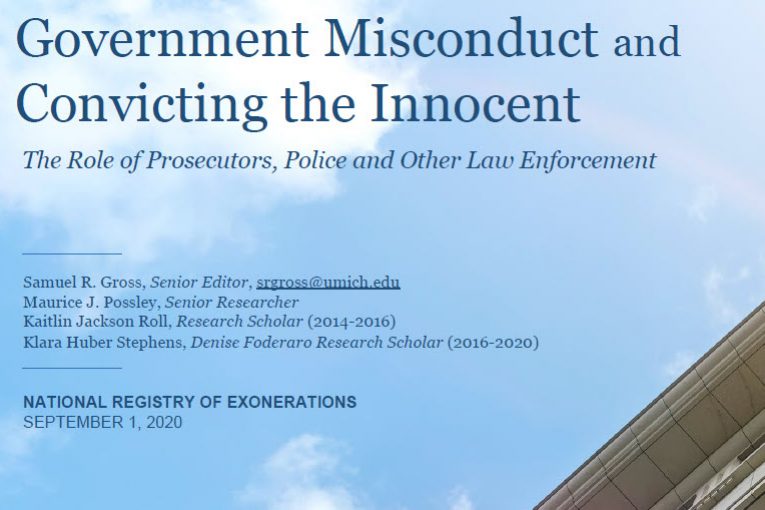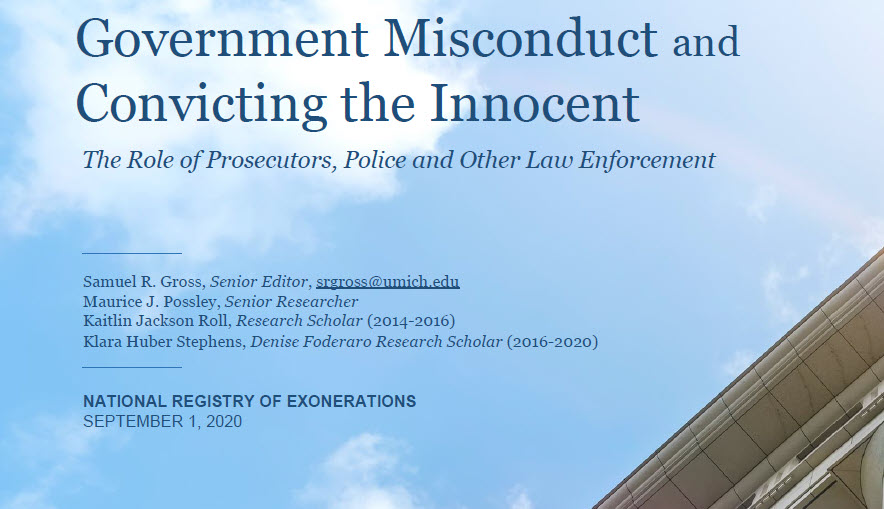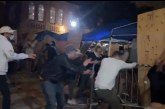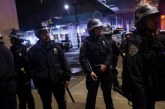

(This is the sixth in an 11-part series by The Vanguard reporting on a study of exonerations produced by Samuel R. Gross, Maurice J. Possley, Kaitlyn J. Roll, and Klara H. Stephens)
By Linhchi Nguyen
A detailed study shows that the act of concealing exculpatory evidence that could prove a defendant’s innocence is the most common type of official misconduct.
According to the exoneration report conducted by Samuel R. Gross, Maurice J. Possley, Kaitlyn J. Roll, and Klara H. Stephens, concealing exculpatory evidence is the most frequent type of official misconduct, consisting of 82 percent of exonerations with any official misconduct.
It is also considered most common in murder cases.
Gross et. al. define the duty to disclose exculpatory evidence as it is described in the prevailing rules of professional responsibility and discovery: Rules require prosecutors to disclose exculpatory evidence to the defense regardless of whether the evidence would result in a different outcome in trial. Violating those rules, whether intentionally or unintentionally, is misconduct by definition.
While these rules apply to prosecutors, most of the evidence at issue is generated by police and forensic analysts. This implies that other law enforcement officers have a duty to inform prosecutors of exculpatory evidence.
In fact, while prosecutors were responsible for concealing evidence in 73 percent of exonerations, police were responsible for 33 percent. In each of those cases, police officers (and occasionally  forensic analysts) either hid the exculpatory evidence from the prosecution as well as the defense, or informed prosecutors without leaving a record that they knew.
forensic analysts) either hid the exculpatory evidence from the prosecution as well as the defense, or informed prosecutors without leaving a record that they knew.
Throughout this section of the report, Gross et. al. go into detail about the kinds of evidence that are concealed, including substantive and impeachment evidence.
Substantive evidence is what would have helped the defense at trial regardless of who testified for the state. In an infamous case that occurred in 1987 in Williamson County, Texas, Michael Morton was wrongfully convicted for murdering his wife, Christine.
In the process of reinvestigating the case, lawyers for Morton found items of information that were well known to police and prosecutors but had been concealed from the defense at trial.
For instance, neighbors testified that they saw a different man, who parked in a green van and walked into the woods behind Morton’s house, days before the murder. There was also evidence that someone attempted to use the victim’s credit card while Morton was in custody.
These concealed evidence are considered substantive evidence of innocence because they made it more likely that Morton was not the murderer. If the police had followed the leads they concealed rather than hiding them in order to convict Morton, they might have been able to prevent a later murder by the real killer and spared Morton from the horror of his false conviction.
On the other hand, impeachment evidence is what challenges the credibility of a prosecution witness who has already testified. This is relevant in the case of Quedillis Ricardo Walker, who went on trial in 1991 for the murder of a former girlfriend.
A statement by Sarah Dunbar, an acquaintance of Walker’s, resulted in Walker being convicted of first-degree murder. She testified that Walker had also threatened her with a knife and a gun, and that she had bought him a pair of gloves that were similar to a piece of glove found near the body.
Twelve years later, Dunbar admitted that she had lied in her testimony in return for a deal on pending drug charges – a deal that was concealed at trial.
The fact that Dunbar made a deal with the prosecution would have cast doubt on the truthfulness of Dunbar’s sworn testimony, and hiding the deal might well have made the difference between Walker’s conviction and acquittal.
Impeachment evidence, such as this one, was hidden in 80 percent of exonerations with concealed exculpatory evidence, according to Samuel R. Gross, Maurice J. Possley, Kaitlyn J. Roll, and Klara H. Stephens.
Substantive exculpatory evidence was concealed in 63 percent. Prosecutors were responsible for concealing information in about two thirds of the cases, both those with concealed impeachment and those with concealed substantive evidence of innocence.
Gross et al. also mentioned in their report about derivative misconduct by concealing exculpatory evidence, which can occur any time the authorities commit another type of misconduct which, if known, might undercut the case against the defendant.
That includes any cases in which law enforcement officers fabricated or planted evidence, coerced false confessions from defendants by illegal means, or deliberately tampered with and distorted evidence from victims or third-party witnesses.
Exculpatory evidence of other official misconduct was concealed in 26 percent of all exonerations, more than half of exonerations with concealed exculpatory evidence.
Lastly, Gross et al. listed four other categories of concealed information that are relevant in these exonerations. One category consists of concealed evidence describing people other than the defendants who committed the crimes.
Prosecutors were reported to be responsible for concealing this evidence two-thirds of the time, more than twice as often as police officers.
Although, this could be due to the fact that it is harder for prosecutors to conceal witness statements that they receive from police reports; police officers can hide a witness statement by simply never recording it or telling anyone else. If this happened, it would probably never be discovered nor counted in the data.
In another category, authorities may conceal evidence that the crime the defendant was convicted of never happened. This occurred in six percent of all exonerations.
Other less common cases involve concealed alibi evidence and evidence about the defendant not committing the crime. In this latter case, authorities concealed the fact that eyewitnesses either failed to identify the defendants or specifically said that the defendant was not the perpetrator.
Altogether, these types of exculpatory evidence were concealed in 44 percent of the exonerations in the national Registry as of date.
To sign up for our new newsletter – Everyday Injustice – https://tinyurl.com/yyultcf9
Support our work – to become a sustaining at $5 – $10- $25 per month hit the link:





